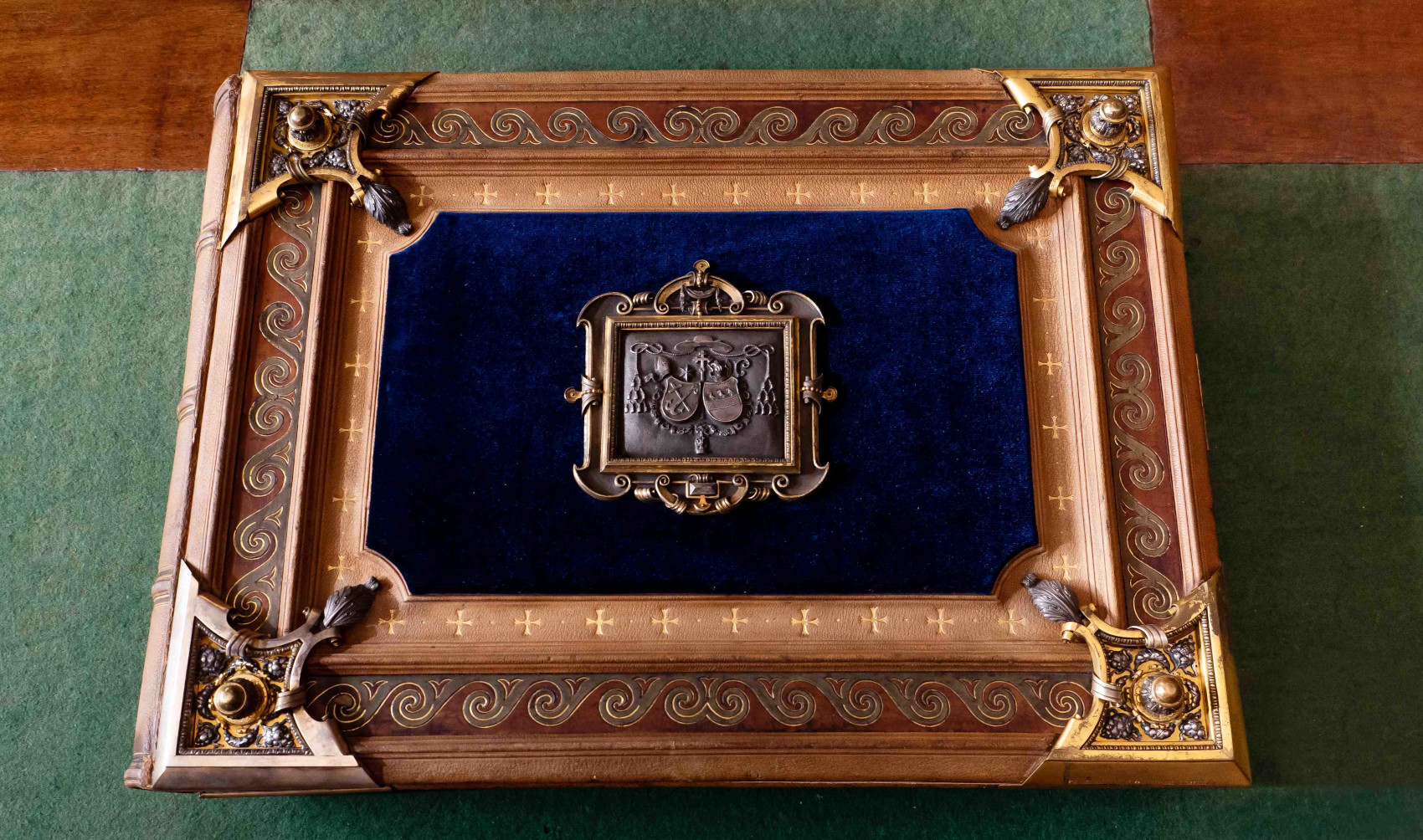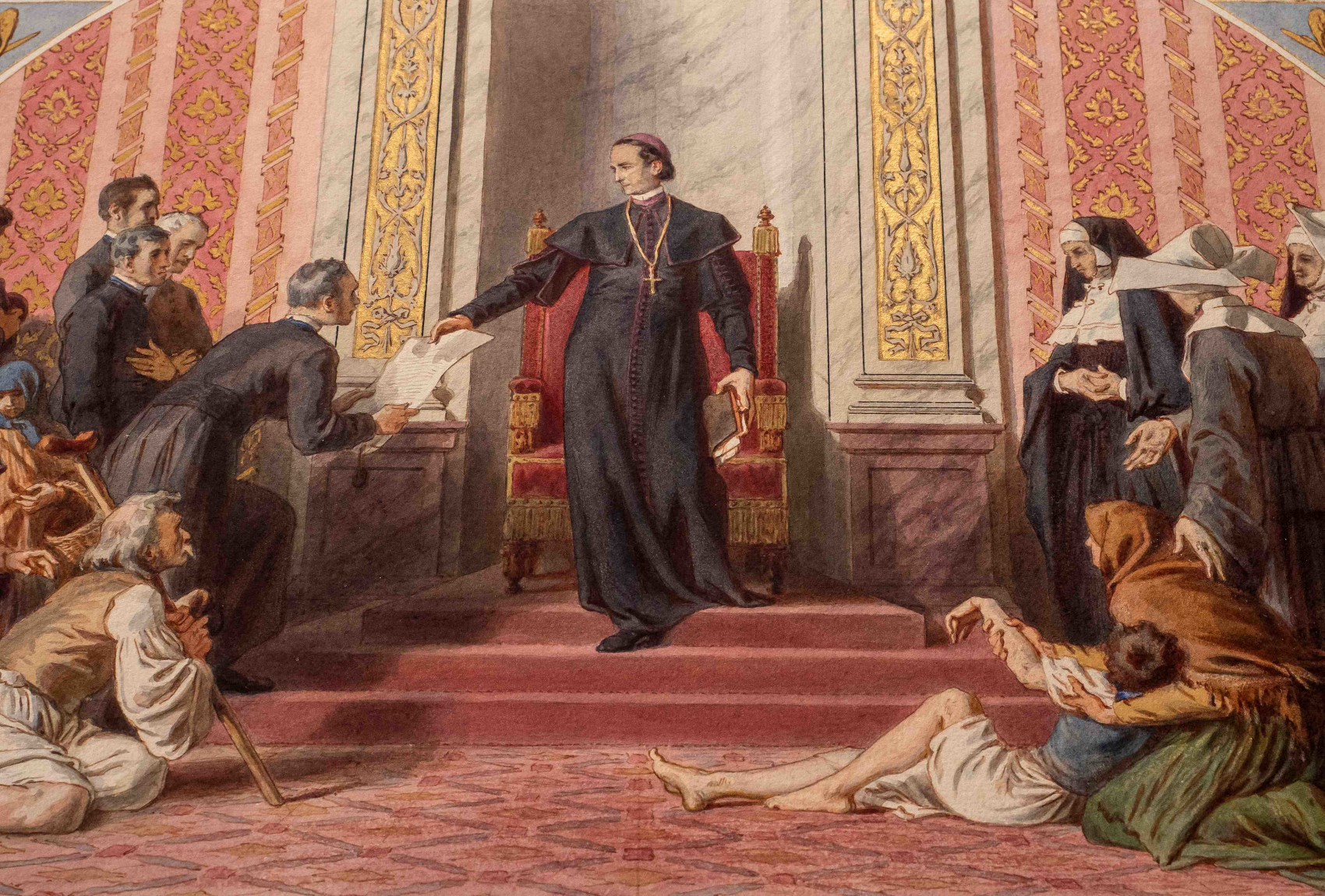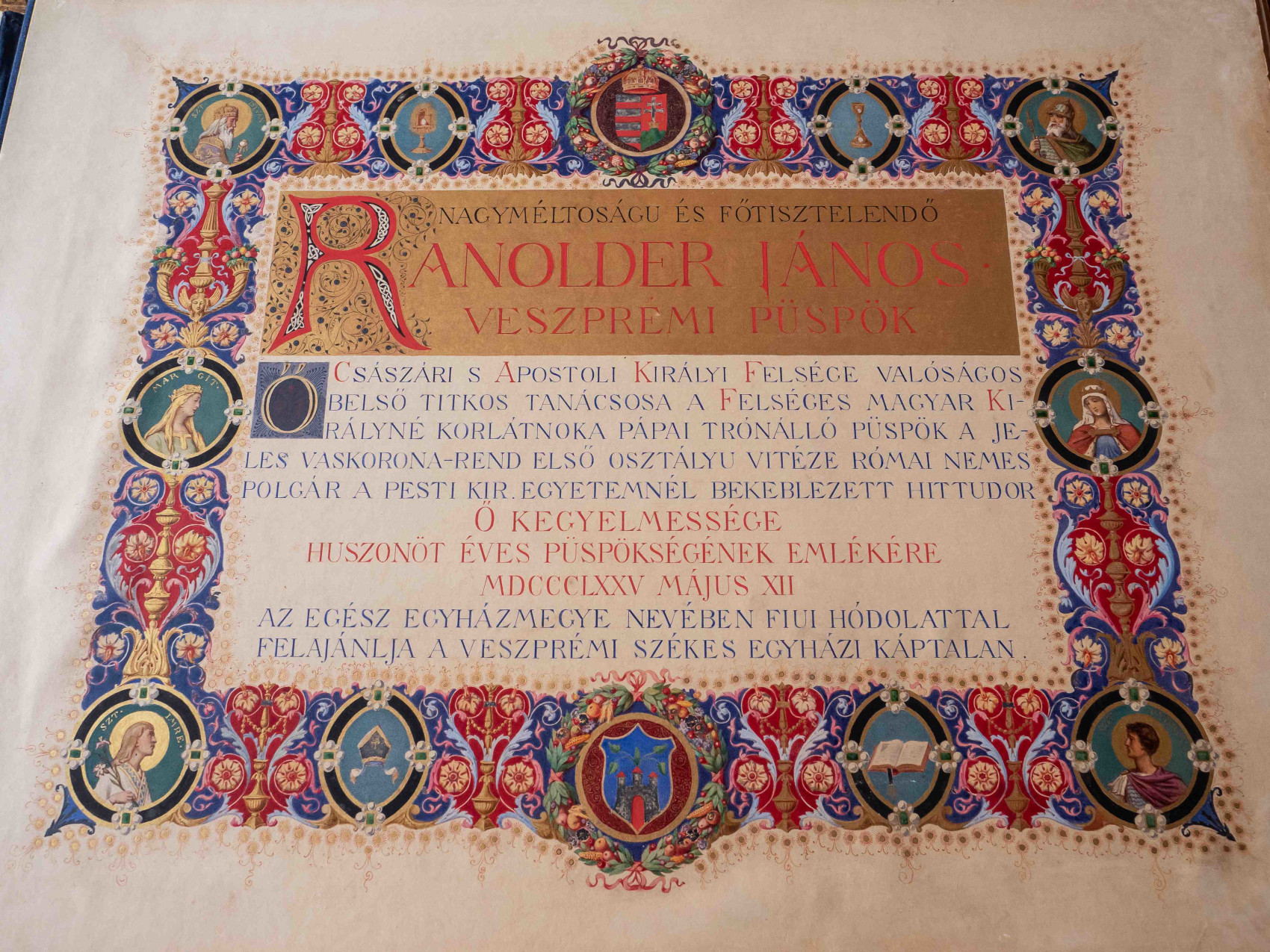
Under the call number 47932, the library of Veszprém episcopate owns the so called Ranolder ornamental album donated to the bishop by the Veszprém cathedral chapter on the 25th anniversary of his episcopal ordination.
János Ranolder was born in Pécs on 16 May 1806. He completed his secondary studies in the Cistercian grammar school in his hometown with excellent results. He was admitted to the seminary of the Pécs diocese in 1824. He finished his theological studies at the theological faculty of the Pest university, he was ordained a priest in 1829. He got a doctor’s degree in the Augustineum in Vienna in 1830. Subsequently, he worked as a teacher of the Scriptures and oriental languages in the Pécs seminary, then he became a teacher of the Pest university in 1840. In 1845, he was appointed a prebendary in Pécs, from 1846 he was appointed as the prefect of the Pécs seminary. He enriched his science with significant scientific works. Along with Bishop Ignác Szepesy, he participated in the Hungarian translation of the Bible. His work: Hermeneuticae biblicae generalis principia rationalia christiana et catholica. Selectis exemplis illustrata usibus auditorium exhibet was used as a textbook in a number of countries.

He was ordained Veszprém bishop on 12 May 1850. He undertook the task of governing the diocese in the hard times after the fall of the 1848-49 revolution and freedom fight. Due to his wisdom and courage, he could save many of his priests from retaliation. During his reign he struggled to promote education, he also called the attention of his priests to the importance of the religious and ethical education of the youth. Ahead of his time, he recognized the importance of female education, and established seven girls’ schools. Besides the teaching and educating activities, he settled down the Sisters of Charity doing poor-relief and nursing activities, he also provided for their support. He entrusted the sisters with the management of a girls’ school in Veszprém, Pápa, Keszthely, Kaposvár, Buda-Pest and Tapolca. The Sancta Maria Institute of the Congregation of Jesus opened in Veszprém in 1860, which was also built by János Ranolder. He supported education with several other donations as well. In 1857, he created the Franz Joseph fund and used its annual interests for subsidizing poor priests, female congregations and poor teachers. He took care of the churches and parish houses of the diocese. He had extraordinary social sensitivity, he was respected by his contemporaries as the guardian of the poor and the sick. He also worked to boost the economy. He promoted the improvement of viticulture and the introduction of silkworm breeding. His attention and care covered everything. He did not care about the problems in his diocese only but worried about the future of the country too. He was the spiritual and material benefactor of the whole society.

A jubilee album was made for this magnificent bishop in József Morzsányi’s decoration workshop in Budapest. The renaissance style work was decorated by the most excellent artists. The paintings were made by Lajos Rauscher, Bertalan Székely, Gusztáv Keleti. The metal works praise the expertise of Gyula Lehmann jr. and Ede Ausim. After the dedication on the title page we can see the portrait of the bishop, followed by his detailed biography. On the next page of the handwritten album we can see a picture showing the members of the chapter with the Baroque cathedral and the episcopal palace. The hymn “Árnyas liget, koszorus lombos erdő” resounds the countless benefits of bishop Ranolder. The next painting presents Ranolder as the founder of the Franz Joseph foundation. The next seven pictures show the splendid building of female education. The album ends with the poem “Fényben ragyog az úr oltára” [The Lord’s altar is shining in light].
After t János Ranolder’s death on 12 September 1875, his jubilee album was acquired by the cathedral chapter. This ornamented work was on display at the Paris world exhibition, since the primary objective of the Ministry of Religion and Public Education was the presentation of the institutes of the Hungarian education.

